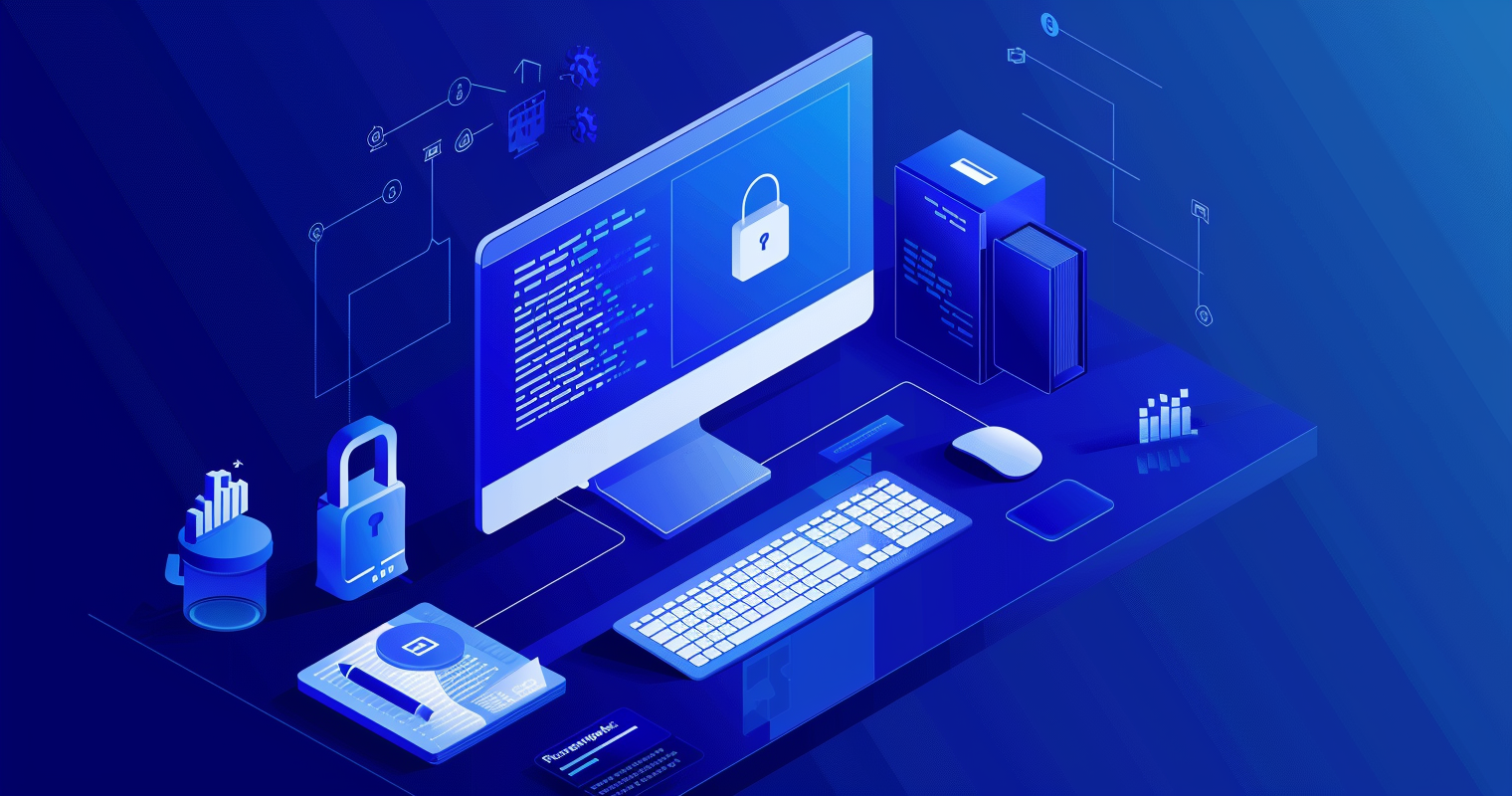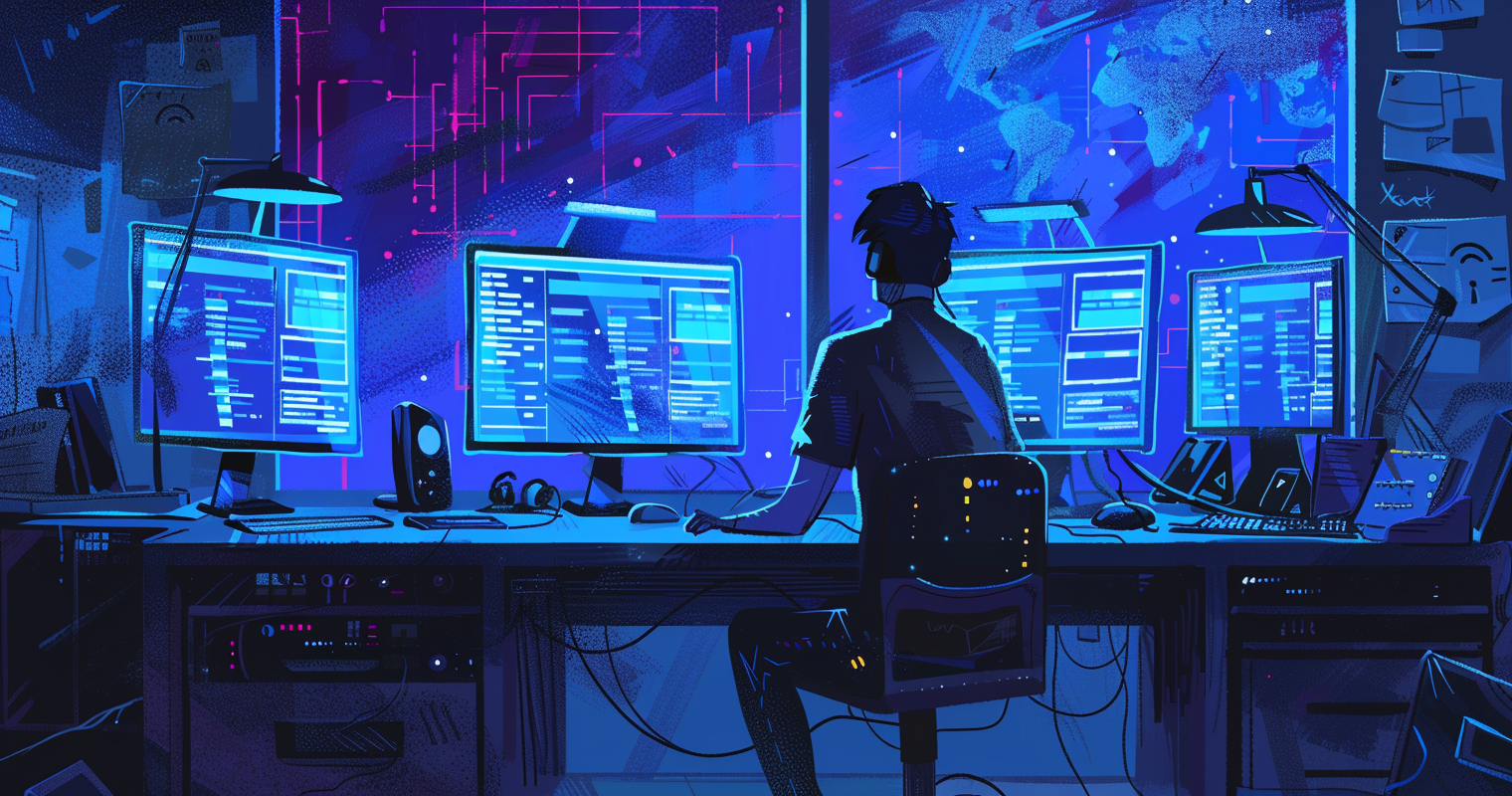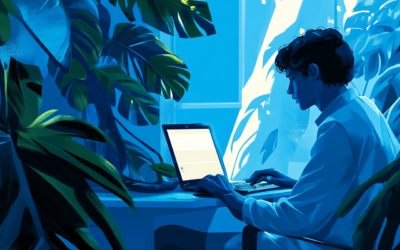Managing a WordPress website can sometimes unexpected challenges such as the dreaded "White Screen of Death" (WSoD). At our agency, we understand the urgency of such issues and the importance of a stable and reliable website. For those who are just starting out with WordPress and want to be better prepared for such situations, we recommend our Article WordPress website: Tutorial for beginnersthere are a few tips for WordPress beginners. We are ready to help you diagnose and resolve such incidents and develop preventative measures to avoid such problems in the future.

Table of contents
Error message: White Screen of Death
Imagine that you visit your website and you are only greeted by one blank, white screen received - this is the WordPress White Screen of Death (WSoD) error. This phenomenon occurs when a website or application stops working properly and does not display any information or error messages. The WSoD can be due to a variety of causes.
The White Screen of Death is similar to the Blue Screen of Death (BSoD) that many Windows users are familiar with. As there is no error message that provides information on how to resolve the problem, you are required to search for the cause yourself. If you have a current backup, it is advisable to restore it first and check whether any important changes have been made since the last backup.
Dealing with plugins
First, it is important to determine whether the WSoD occurs in the backend or frontend of your website. Log into your WordPress dashboard via "yourdomain.com/wp-admin" to check this. If the backend is working properly, a faulty WordPress plugin could be the cause.
- Deactivate all plugins via the mass processing function.
- Then check whether the white screen is still present, if not, it is due to a plugin.
- Now activate each plugin and check After each one, check whether the problem occurs again. This way you can find the faulty plugin.
If you do not have access to the backend, you can also deactivate plugins via FTP.
- Connect to your server via FTP.
- Navigate to the "wp-content" folder.
- Rename the plugins folder (e.g. to "plugins_deactivated").
- Try to log in again.
- Rename the folder back to Plugins
- Again, activate each plugin and check whether the problem occurs after each one.
Then check whether a Update for the faulty plugin is available.
Dealing with themes
If no plugins are responsible for the WSoD, this could currently be active theme of the culprit be.
- Log in to the backend.
- Select the "Themes" menu under "Design" in the dashboard.
- Activate a standard theme and check whether the white screen is still present.
If you do not have backend access, connect via FTP.
- Open the "wp-content/themes" folder.
- Rename the active theme to deactivate it.
- WordPress automatically activates the last default theme.
By following these steps, you can determine whether the problem is caused by the theme and take appropriate action.

Visibility for search engines
In the area of search engine optimization, there are numerous points that determine the visibility and success of a website. One of these settings can be found in the "Read" menu under the website settings. Here you can select the option "Visibility for search engines" which plays a role that should not be underestimated.
This function is particularly important in the development phase of a website. By activating it, search engines such as Google are signaled that the page is currently not indicated should be. This prevents unfinished content from appearing in search results and potentially conveying an unprofessional image of the brand.
Common error
This useful setting is often activated in the hot phase of website development in order to hide unfinished content from public view. However, the problem often arises after the development work has been completed. Not infrequently is forgottento undo this setting. The result: the website remains invisible to search engines. Such a mistake, which should be avoided at all costs, can have serious consequences for the online presence and findability by potential customers. Without a presence in search engines, the website lacks the necessary visibility that is crucial for business success online.
Checking and adjusting the settings
It is therefore essential, before the official launch of the website one Review of all relevant settings. Make sure that the "Visibility for search engines" option is deactivated so that you can present your content to the world. It is advisable to create a checklist for the launch in which this point is noted as a critical step.
Carry out regular updates
WordPress is one of the most widely used content management systems in the world and therefore a favorite target for hacker attacks. Its popularity and widespread use make it essential that website operators are aware of the Maintenance of their pages. One continuous Care by installing updates for plugins, themes and the WordPress core system is fundamental.
Risks of ignoring
The risk of neglecting regular updates is underestimated by many. These updates often contain important Security updatesthat close vulnerabilities that can be exploited by hackers. The question is therefore not, whetherbut when an unmaintained page is attacked.
Insert strategies
We recommend that you use a Fixed strategy for the updates. A regular schedule should be created to ensure that no updates are overlooked. To ensure that your website is always up to date, we are happy to support you with the following.
Regularly updating WordPress, its plugins and themes is not an option, but a necessity. Necessity for the security of any website. If you ignore this important maintenance task, you are putting your online presence at risk. unnecessary risks out. However, implementing a solid update strategy can ensure that the website is armed against most attack attempts. Acting responsibly in this area not only protects your digital presence, but also the Data of your customers and users.

Customization of the WordPress themes
Customizing a WordPress theme to implement specific design requirements or functionalities is a common practice. However, direct changes to the main theme can lead to significant problems. Every time the theme is updated, there is a risk that individual changes made will be overwritten and therefore lost. This can not only lead to a return to the standard design, but can also eliminate important functional adjustments.
Meaning of a child theme
To avoid such unwanted surprises, it is advisable to use a so-called Child theme to use. Such a theme inherits the functionalities of the main theme, that of the parent theme, but allows secure changes and customizations without being affected by updates to the parent theme. Using a child theme ensures that your personalized customizations are preserved even if the main theme is updated. The downside is that the loading time of your website may be slightly affected as two themes need to be loaded.
Advantages of installing a child theme
By using a child theme, you can customize your website while enjoying the benefits of regular security and feature updates to the main theme. It offers a safe environmentto make customizations that go beyond simple design changes, such as modifying PHP files or adding custom functions. You can create it manually or - as with many other things in WordPress - use a child theme plugin.
Unused themes
When installing WordPress, the following are often several themes by default is also installed. However, many users switch to an individual theme that better suits their needs and leave the pre-installed themes untouched in the system. However, this can be a burden for your website. Every installed theme, even if it is not active, can Potential security gaps which, if not updated regularly, can pose a risk to the entire website. Similarly, superfluous themes can unnecessarily increase the size of website backups, which can lead to longer loading times and additional costs.
Deactivate unused themes
It is advisable to remove all themes that you are not actively using, with the exception of one. This remaining theme serves as Reserve or so-called "fallback" theme. It is used in the event of technical problems with the current active theme. This ensures that your website remains functional even in an emergency.
- Open your WordPress dashboard, select the "Themes" area and then "Themes".
- Now decide on a reliable theme that will remain your backup. E.g. "Twenty Twenty-One" (the number at the end describes the current year and thus the current theme, so 2024 is "Twenty Twenty-Four").
- Remove all themes, that you no longer use. To do this, click on the theme and select "Delete theme".
Changes to the permalinks after publication
Once published, websites and posts are indexed by search engines and can also be linked to by other websites. Changing the associated URL after publication can cause significant problems, in particular the occurrence of 404 error messages signaling that the page cannot be found. This can both affect the user experience and have a negative impact on your site's search engine ranking.
To minimize the problems caused by changing a permalink, a redirect can be set up. A redirect is a server-side instruction that tells the browser that the content can be found at a new address. This automatically redirects users from the old URL to the new one and helps to minimize the SEO impact.
- Determine the Necessity of a redirect: Before you set up a redirect, you should make sure that the URL change is unavoidable.
- Selecting the type of redirect: The most common types are 301 (permanent) and 302 (temporary). A 301 redirect is recommended for permanent changes, as this signals to search engines that the page has been moved permanently.
SEO and performance aspects
From an SEO perspective, it is advisable to make URL changes after publication as far as possible. to avoid. Frequent changes and the resulting redirects can dilute the authority of a page, as link equity (the strength that a URL receives through backlinks) can be partially lost through redirects. In addition, numerous redirects can negatively affect the loading speed of your website, which in turn has a negative impact on the user experience.

Conclusion
In conclusion, although extremely powerful, dealing with WordPress can also have its pitfalls, such as the white screen of death, issues with plugins and themes or managing website updates. These challenges can be overwhelming, especially if they affect the visibility of your website and potentially cause loss of business. Our agency offers you not only support with acute problem solving, but also strategic advice and maintenance services to keep your website secure and up-to-date. Contact us to ensure that your website has the best possible online presence and that you can concentrate fully on your core business.




